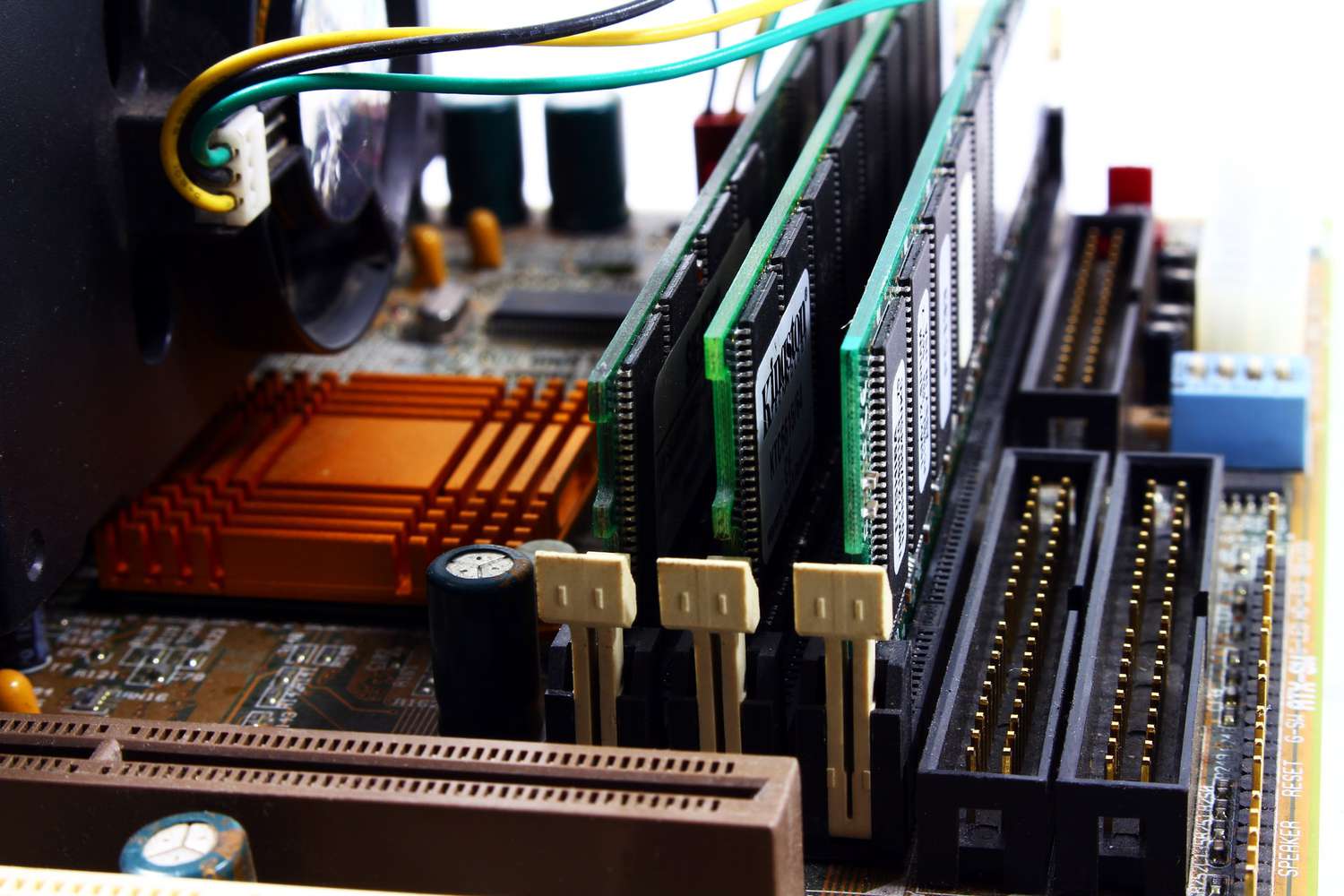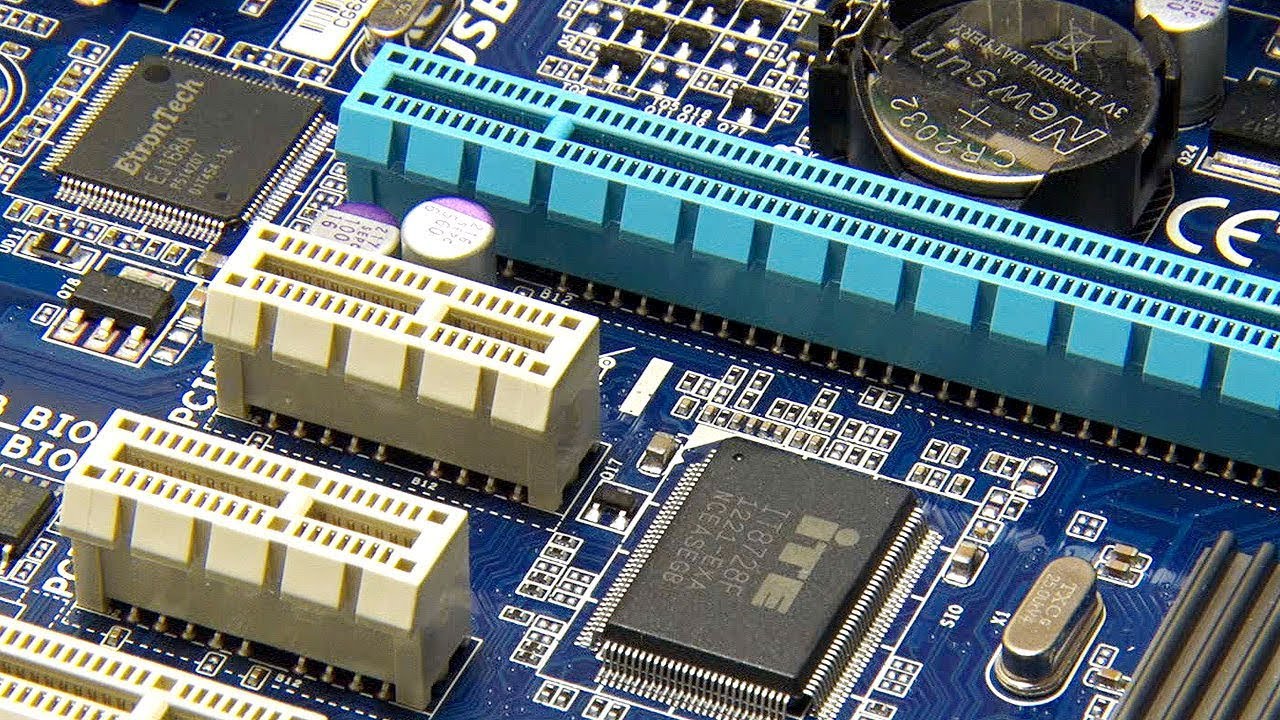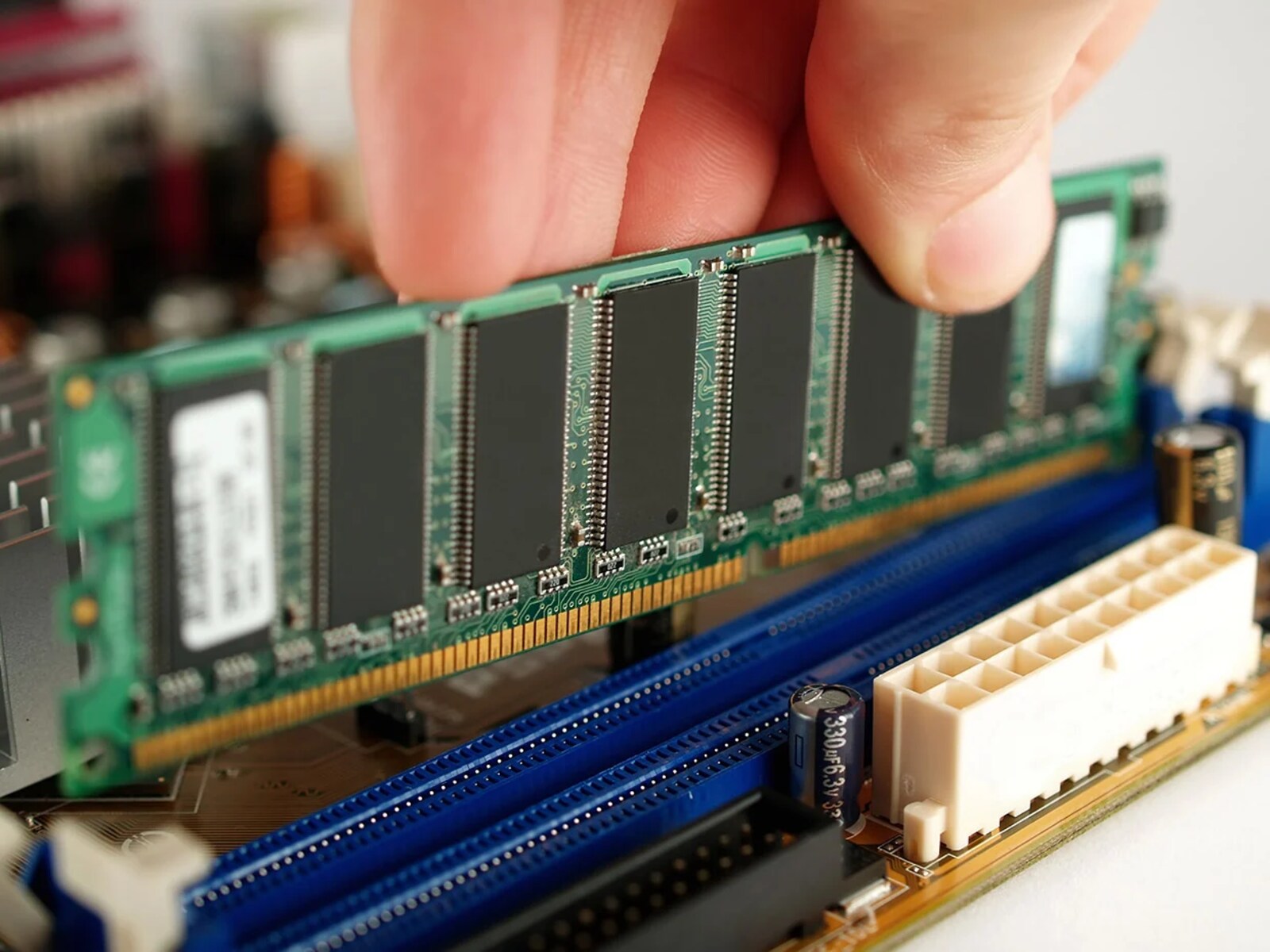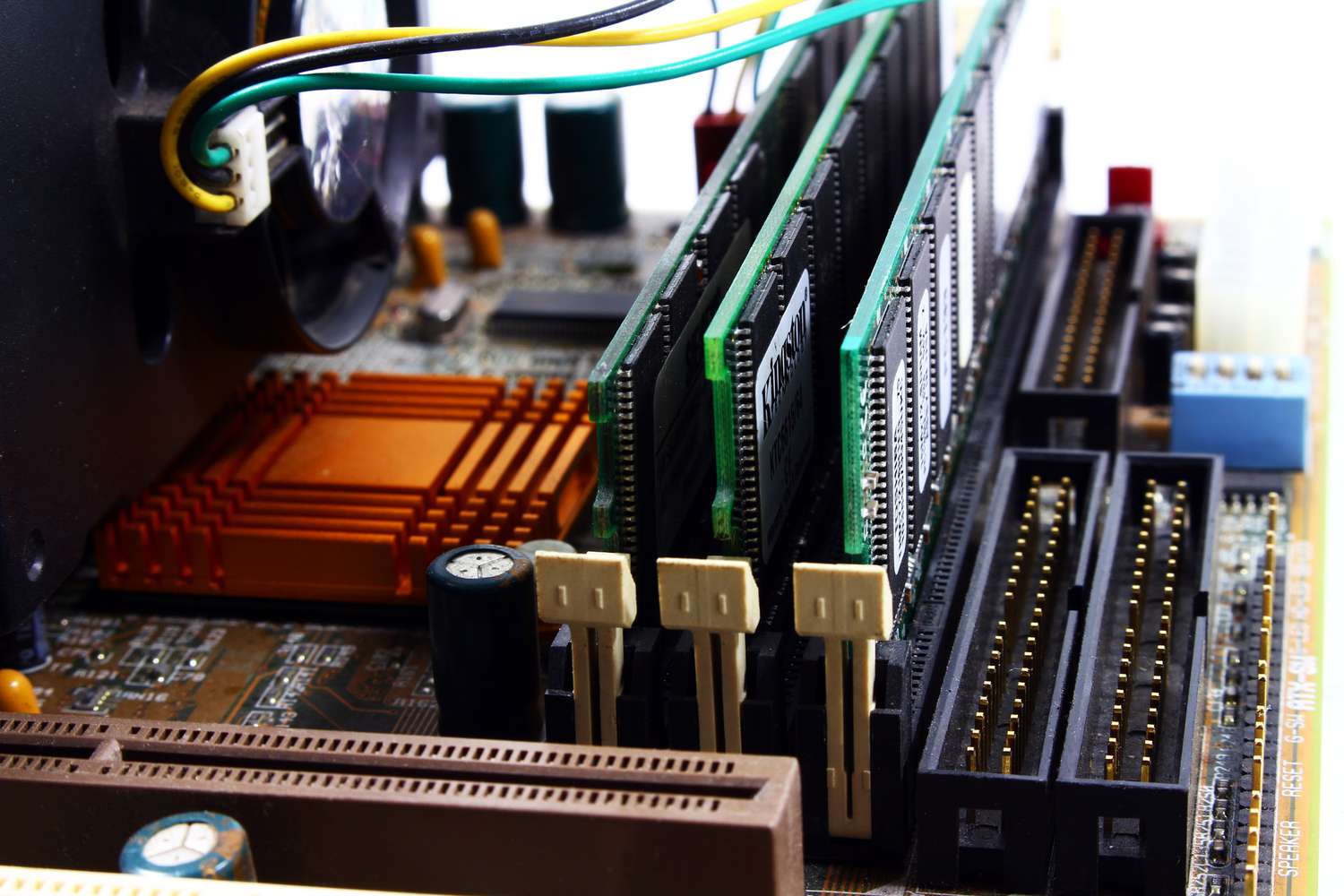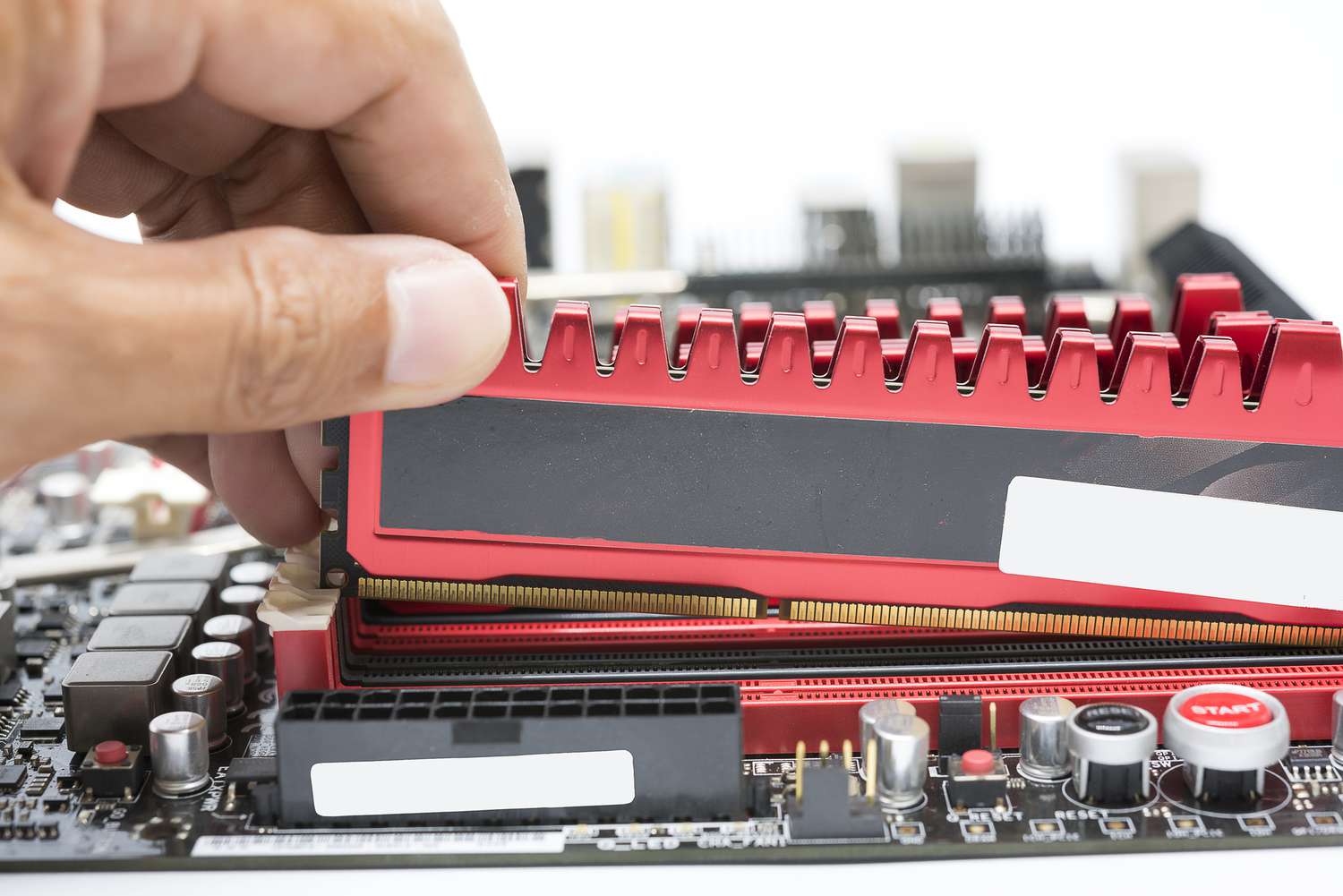Introduction
When it comes to upgrading your computer’s memory, it’s important to ensure you’re getting the maximum performance boost from your RAM module. Most modern motherboards come equipped with multiple RAM slots, which sometimes leaves users wondering if it matters which slot they use for their new memory stick. The truth is, the specific slot you choose can make a difference in terms of memory performance. In this article, we’ll explore how RAM slots work and whether it really matters which one you use.
RAM, or Random Access Memory, is a crucial component in any computer system. It stores data that the CPU needs to access quickly, allowing for faster and more efficient operations. RAM slots, typically located near the CPU socket on the motherboard, are designed to hold the RAM modules securely.
Most motherboards have two or more RAM slots, with some high-end models even supporting four or more. The number of slots can affect the maximum amount of RAM your system can support. Additionally, it is important to consider the memory type supported by your motherboard, such as DDR4 or DDR3, before purchasing new RAM modules.
However, the question arises: does it really matter which RAM slot you use for the installation of your memory stick? The short answer is yes, it can make a difference. The location of the RAM module in the motherboard can affect the memory’s performance due to the way RAM slots are wired.
Next, we’ll delve deeper into the difference between single channel and dual channel memory and how it impacts your system’s performance. Understanding this difference is essential in determining the best RAM slot to use for your new memory stick.
How RAM Slots Work
To understand how RAM slots work, it’s important to have a basic understanding of how RAM modules function. RAM modules contain multiple memory chips that store data in a digital format. These memory chips are organized into channels, and each channel has a specific number of memory chips.
A RAM slot, also known as a memory slot, is a physical connector on the motherboard that allows the RAM module to be inserted. Inside the RAM slot, there are multiple pins that make contact with the corresponding pins on the RAM module. These pins are responsible for transmitting data and power between the RAM module and the rest of the system.
Modern motherboards typically support either single or dual-channel memory configurations. In a single channel configuration, the RAM module is inserted into a single RAM slot. In a dual-channel configuration, the RAM modules are installed in pairs, occupying two slots.
When multiple RAM slots are available, they are usually color-coded to indicate the memory channel configuration. For example, on some motherboards, the slots belonging to the same channel may be colored the same, while slots belonging to different channels may have different colors.
The memory controller, which is either built into the CPU or located on the motherboard, manages the data flow between the RAM modules and the rest of the system. When memory is accessed, it is divided into channels based on the number of RAM modules being used. The memory controller then distributes the data across these channels for parallel processing.
In a dual-channel configuration, the memory controller can access data from both memory channels simultaneously, which can result in improved memory performance. This is because data can be read or written to both channels simultaneously, effectively doubling the memory bandwidth compared to a single-channel configuration.
It is important to note that using a single RAM module in a dual-channel motherboard will result in the system operating in single-channel mode. This is because the memory controller requires matching capacities and speeds in each channel for optimal performance.
Now that we understand how RAM slots work and the difference between single and dual-channel memory, we can explore whether it really matters which RAM slot we use for our memory installation.
Single Channel vs. Dual Channel Memory
Single channel and dual channel memory are two different memory configurations that can impact the performance of your computer system. Let’s take a closer look at the differences between these two configurations.
In a single channel memory configuration, the system utilizes only one memory channel to access data stored in the RAM module. This means that the memory controller can access and process data one channel at a time. While this configuration allows your system to function properly, it may not deliver the same level of performance as a dual-channel configuration.
On the other hand, a dual-channel memory configuration utilizes two memory channels simultaneously to access and process data. This configuration can offer significant performance improvements due to the increased memory bandwidth. With two memory channels working in parallel, the memory controller can read and write data faster, resulting in a smoother and more responsive computing experience.
The advantage of dual-channel memory becomes particularly noticeable in tasks that involve a large amount of data transfer, such as multimedia editing, gaming, and running multiple applications simultaneously. In these scenarios, the increased memory bandwidth provided by dual-channel memory can result in faster load times, smoother gameplay, and overall improved system responsiveness.
It’s important to note that in order to take full advantage of dual-channel memory, the RAM modules must be installed in matching pairs in the correct RAM slots. This ensures that each channel has the same capacity and speed, allowing the memory controller to distribute data evenly across both channels.
While dual-channel memory offers clear performance advantages, it’s worth mentioning that the difference between single channel and dual channel memory might not be noticeable in everyday computing tasks or for systems that are not under heavy load. If you primarily use your computer for basic tasks like web browsing, word processing, or watching videos, you may not see a significant difference in performance between the two memory configurations.
Now that we understand the differences between single channel and dual channel memory, let’s explore whether it really matters which RAM slot we use for our memory installation.
Does It Really Matter Which RAM Slot I Use?
After understanding how RAM slots work and the differences between single channel and dual channel memory, the question remains – does it really matter which RAM slot you use for your memory installation? The answer is yes, it can make a difference, especially when it comes to dual-channel memory configurations.
For systems using dual-channel memory, it is crucial to install the RAM modules in the correct slots to ensure optimal performance. Typically, motherboards with four RAM slots will have two pairs of slots, each representing a memory channel. The slots belonging to the same channel are usually color-coded or marked for easy identification.
When installing dual-channel memory, it is recommended to populate the corresponding slots of each channel with identical RAM modules. This means that if you have two RAM modules, they should be installed in the same-colored slots to activate dual-channel mode. Failing to install the RAM modules in the correct slots may result in the system operating in single-channel mode, potentially reducing memory performance.
It’s important to consult your motherboard’s manual or documentation to determine the exact slot configuration for dual-channel memory installation. The manual will specify which slots to use for dual-channel operation and provide information on any specific restrictions or requirements.
For systems using single-channel memory, the specific slot you choose may still have some impact on performance, but it is generally less significant compared to dual-channel configurations. In this case, you can typically install the RAM module in any available slot without affecting the memory performance.
It’s worth noting that while installing the RAM modules in the correct slots for optimal performance is important, the actual impact on day-to-day computing tasks may not be noticeable for most users. The difference in performance between using the correct slot configuration and using an incorrect one might be marginal, especially for basic computing tasks.
However, for those who engage in demanding tasks such as gaming, video editing, or other resource-intensive applications, optimizing memory performance can make a noticeable difference. In these scenarios, ensuring correct RAM slot configuration is recommended to fully leverage the advantages of dual-channel memory.
In the next section, we will discuss some helpful tips for determining the best RAM slot for your system and ensuring a successful installation process.
Determining the Best RAM Slot for Your System
When it comes to determining the best RAM slot for your system, there are a few factors to consider. Whether you’re upgrading your existing memory or building a new system, following these tips can help you make an informed decision:
- Consult your motherboard’s manual: The first step is to consult the manual or documentation that came with your motherboard. It will provide detailed information about the memory slot configuration and any specific guidelines for installing RAM modules.
- Check for color-coded slots: Many motherboards color-code their RAM slots to indicate the different memory channels. Look for slots that have the same color and install your RAM modules accordingly. Usually, the basic rule is to install matching modules in the same channel.
- Consider future upgrades: If you plan to expand your memory capacity in the future, it’s important to leave room for additional RAM modules. Installing modules in the correct slots from the start will make it easier to add more modules later without having to reconfigure the entire system.
- Verify compatibility: Ensure that the RAM modules you plan to install are compatible with your motherboard. Check the specifications of both the motherboard and RAM modules to ensure they match in terms of capacity, speed, and technology (such as DDR3 or DDR4).
- Consider symmetry: If you have an even number of RAM modules, it’s usually best to have symmetrical placement across the memory channels. This means installing the same number of modules in each channel to achieve balanced memory performance.
- Seek expert advice: If you’re unsure about the best RAM slot configuration for your system, don’t hesitate to seek advice from experts or forums dedicated to computer hardware. They can provide valuable insights and recommendations based on their experience and knowledge.
By taking these factors into account, you can ensure that you’re installing your RAM modules in the best slots for optimal performance and future upgradability.
Now that you have a better understanding of how to determine the best RAM slot for your system, let’s move on to some practical tips for installing RAM modules in the correct slots.
Tips for Installing RAM in the Correct Slot
Installing RAM modules in the correct slots is essential for optimal performance. Here are some tips to ensure a successful installation:
- Power off and unplug your computer: Before installing or removing any hardware components, make sure to power off your computer and unplug it from the power source. This prevents any potential damage to the components or electrical shocks.
- Ground yourself: To prevent static electricity from damaging your RAM modules, ground yourself by touching a grounded metal surface before handling them. Alternatively, you can use an anti-static wrist strap to discharge any static electricity.
- Identify the correct RAM slots: Refer to your motherboard’s manual or documentation to identify the correct RAM slots for the installation. Color-coded slots or labels on the motherboard can also help you determine the correct slots.
- Remove existing modules (if applicable): If you are upgrading your memory, you may need to remove existing modules before installing new ones. Gently press down on the module’s locking tabs on both sides until it pops up, and then remove it from the slot.
- Align the RAM module correctly: Ensure that the notch on the RAM module aligns with the slot’s keying mechanism. This ensures that the module is inserted in the correct orientation. Do not force the module into the slot; it should slide in smoothly with gentle pressure. If it doesn’t fit, double-check the orientation and alignment.
- Press down firmly: Once the RAM module is aligned correctly, press down firmly on both ends until the locking tabs on the slot click into place. This ensures a secure connection between the module and the slot.
- Check for proper installation: After installing the RAM module, visually inspect it to ensure that it is fully seated in the slot and that the locking tabs are securely in place. A slight upward tilt on the module indicates that it is not properly inserted, so double-check and reseat if necessary.
- Restart and verify: After successfully installing the RAM modules, restart your computer and access the BIOS or UEFI settings to verify that the system recognizes the new memory. If the system recognizes the installed RAM correctly, you’re good to go!
Following these tips will help you install your RAM modules in the correct slots, ensuring optimal performance and stability for your computer system.
Now that we have covered the tips for installing RAM modules and understanding the importance of correct slot placement, let’s conclude our discussion.
Conclusion
Choosing the right RAM slot for your memory installation can have an impact on your system’s performance, especially when it comes to dual-channel memory configurations. Understanding how RAM slots work and the differences between single channel and dual channel memory is crucial in determining the best slot for your system.
In dual-channel memory configurations, it is important to install matching pairs of RAM modules in the correct slots to activate dual-channel mode and maximize memory performance. This typically involves installing modules in slots that belong to the same memory channel, which are often color-coded or labeled on the motherboard.
For single-channel memory configurations, the specific slot you choose may have a marginal impact on performance, but it is generally less significant compared to dual-channel configurations. In these cases, you can typically install the RAM module in any available slot without affecting the memory performance.
When determining the best RAM slot for your system, it is important to consult your motherboard’s manual, consider future upgrades, verify compatibility, and seek expert advice if needed. By following these guidelines, you can ensure that you’re installing your RAM modules correctly for optimal performance and upgradability.
Additionally, carefully following the installation process, such as powering off your computer, grounding yourself, and aligning the modules correctly, is crucial for a successful RAM installation. Checking for proper installation and verifying your system’s recognition of the new memory is also essential.
In conclusion, understanding how RAM slots work and choosing the correct slot for your memory installation can enhance your system’s performance, specifically in dual-channel memory configurations. By taking the time to consider the specific requirements of your motherboard, following proper installation procedures, and aligning the RAM modules correctly, you can ensure that your system benefits from improved memory performance. So, make the most out of your RAM upgrade by installing your modules in the appropriate slots and enjoy a faster and more efficient computing experience.







